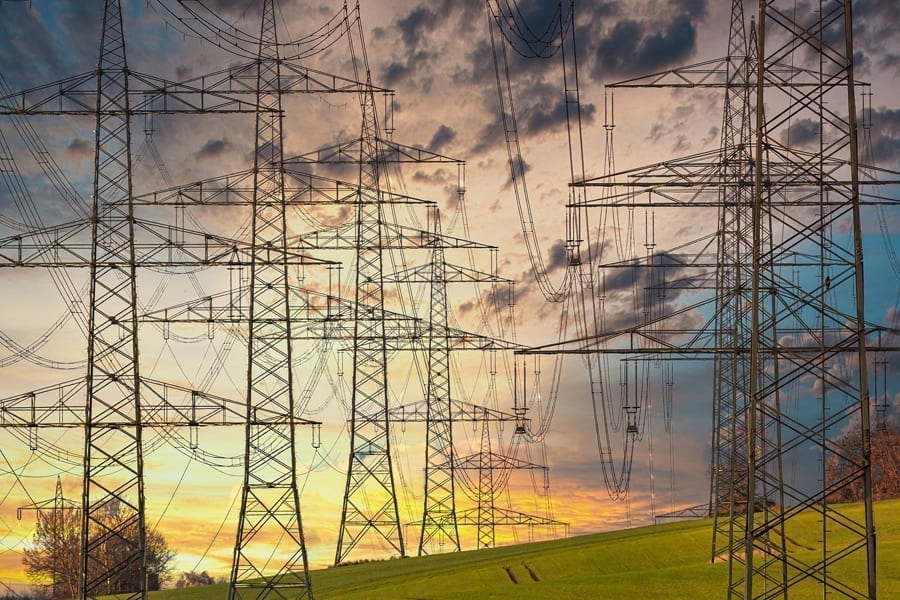
The mid-February blackouts in Texas have raised a lot of questions about power grid reliability. While investigations into the underlying causes of the outages could take a while to complete, and I don’t want to weigh in on the main aspects of the problem until more information is available, the situation has raised one concern I’ve had for some time and have even written about in this column in the past: the need to modernize the U.S. electric power transmission system.
As many readers probably know, the U.S. power grid is divided into three main systems—the Western Interconnection, the Eastern Interconnection, and the Electric Reliability Council of Texas (ERCOT). The three operate mostly independent of each other with very little electricity transferred between the three regions. I recently spoke to Arshad Mansoor, CEO of the Electric Power Research Institute (EPRI), about the U.S. transmission grid, among other things. I asked him what he would recommend to improve the system, how much the changes might cost, and if he thought they would ever get done. He responded, “That’s a loaded question,” but then offered some insight.
Transmission Project Hurdles
“One of the challenges in transmission is the planning process could take 10 years,” Mansoor said, speaking of large transmission projects in general. One of the reasons is all the permitting work involved. Obtaining right-of-way access, that is, the legal right to pass along a specific route through grounds or property belonging to others, isn’t always easy. Then, builders obviously have to install the towers and run the wires. Mansoor suggested a decade is sometimes a short timeframe for building transmission.
However, there are cases where transmission projects have been completed within very aggressive timelines, and even finished ahead of schedule. “California Path 15 was built in four years,” Mansoor said, suggesting researchers, policymakers, regulators, and transmission builders have the ability to respond to the challenge. “When there is a will, there is a way,” he said. “So, we will have to completely retool, rethink, and have a unified focus on building transmission.”
Mansoor noted that there are currently seven high-voltage direct-current (HVDC) interties between the Western and Eastern Interconnections. All of them were commissioned between 1977 and 2005, with most being added in the mid-1980s and having capacities of about 200 MW each. The combined capacity of the seven is 1,320 MW.
With the majority of the existing HVDC interties having been in operation for more than 35 years, one way to begin expanding interconnectedness of the system is through upgrades. “You have opportunities to modernize them—some of them are still using vacuum tubes,” said Mansoor. Upgrading the current ties avoids the most difficult permitting and right-of-way obstacles, too, because those pieces are already in place, so projects could be started more quickly. Granted, the capacity that could be added in this way won’t be game-changing, but it may be possible to double the present capacity, which would still be worthwhile.
Naysayers might counter with the argument that greater interconnectedness wouldn’t have made much of a difference during the Texas blackouts. They could rightly claim that lost generation was so enormous during the February cold spell—ERCOT said 46 GW of generation was unavailable at the height of the emergency—that any additional capacity provided through interties wouldn’t have come close to filling the gap. However, there are cases where the difference could have been lifesaving, and having greater flexibility is never a bad thing.
The Evolving Power Grid
Mansoor’s vision for improving the U.S. transmission grid is much larger than just upgrading a few interties. He believes a broader interconnection with other systems through new transmission will increase access to diverse resources and fuel supplies, and is a critical piece of a resilient grid that accommodates more low-carbon resources.
EPRI, the National Renewable Energy Laboratory, and some other organizations have been studying what the future resource mix in the U.S. could look like. The researchers concluded that by 2030 the wind and solar capacity in the U.S. could be four to five times the currently installed capacity of the two resources. “So, let’s step back and understand what it is—200 gigawatts of installed capacity, roughly, is what we have today—we’re looking at 800 gigawatts, 1,000 gigawatts. How can you do that without building the transmission lines to access those renewables?”
Much like the intertie upgrades, there are opportunities to enhance existing substations throughout the country. Mansoor said substations are a “collection point” for renewables. He explained that the Mead substation, which is located in the El Dorado Valley just outside of Boulder City, Nevada, and is a major interconnection point for the Western Area Power Administration (WAPA), is one example of a substation that could be improved to allow greater power transfer, but there are many such examples.
“It’s hard to say what the cost is,” said Mansoor, but he suggested it was far less than the cost of not taking action. In Texas, for example, when you weigh the lives lost, economic impacts on businesses, damages to homes and other buildings, and stress experienced by customers dealing with the crisis, it’s hard to argue that money spent avoiding the problems would have been wasted. “Societal dependence on electricity is becoming more and more and more, and we haven’t even started electrification of transportation,” Mansoor said, suggesting that the costs of future such events could be even greater.
—Aaron Larson is POWER’s executive editor.
"electric" - Google News
April 01, 2021 at 10:21AM
https://ift.tt/2QXhu4k
Electric Power Transmission: Long on Planning, Short on Time - POWER magazine
"electric" - Google News
https://ift.tt/2yk35WT
https://ift.tt/2YsSbsy
Bagikan Berita Ini















0 Response to "Electric Power Transmission: Long on Planning, Short on Time - POWER magazine"
Post a Comment